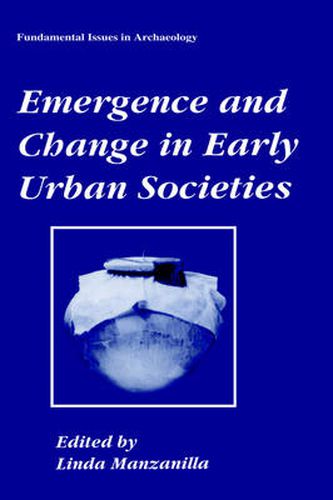Readings Newsletter
Become a Readings Member to make your shopping experience even easier.
Sign in or sign up for free!
You’re not far away from qualifying for FREE standard shipping within Australia
You’ve qualified for FREE standard shipping within Australia
The cart is loading…






This title is printed to order. This book may have been self-published. If so, we cannot guarantee the quality of the content. In the main most books will have gone through the editing process however some may not. We therefore suggest that you be aware of this before ordering this book. If in doubt check either the author or publisher’s details as we are unable to accept any returns unless they are faulty. Please contact us if you have any questions.
This book gives an overview of different factors involved in the emergence and change in early urban societies in fourth-millennium Mesopotamia and Egypt; pre-Shang China; Classie horizon Central Mexico, Oaxaca, and the Maya Area; and Middle Horizon societies in the Andean Region. These factors range from centralized storage and redistributive econo mies, agromanagerial models, mercantile network control, confliet and conquest, conversion of military commanders into administrators, political power through monumental cosmic reproduction, and elite power through ideological change. It discusses specific archaeological data useful in theoretieal construction. In the Introduction, a discussion of different developmental processes of urban societies is made. The Eastern Anatolian example emphasizes the role played by interregional exchange networks linking the Mesopotamian plains with the Syro-Anatolian regions. The emergence of an elite is related with the control of the movement of craft goods and raw materials, more than with the appropriation of subsistence goods. The Chinese example stresses the importance of conflict provoked by demographie pressures on resources. The Mesoamerican cases relate to vast urban developments and manu facturing centers, ideological importance of monumental planning, and changing behavior of elites. The Andean cases are related either to the transformation of theocratie leadership into military administrators oe to the agricultural intensification model.
$9.00 standard shipping within Australia
FREE standard shipping within Australia for orders over $100.00
Express & International shipping calculated at checkout
This title is printed to order. This book may have been self-published. If so, we cannot guarantee the quality of the content. In the main most books will have gone through the editing process however some may not. We therefore suggest that you be aware of this before ordering this book. If in doubt check either the author or publisher’s details as we are unable to accept any returns unless they are faulty. Please contact us if you have any questions.
This book gives an overview of different factors involved in the emergence and change in early urban societies in fourth-millennium Mesopotamia and Egypt; pre-Shang China; Classie horizon Central Mexico, Oaxaca, and the Maya Area; and Middle Horizon societies in the Andean Region. These factors range from centralized storage and redistributive econo mies, agromanagerial models, mercantile network control, confliet and conquest, conversion of military commanders into administrators, political power through monumental cosmic reproduction, and elite power through ideological change. It discusses specific archaeological data useful in theoretieal construction. In the Introduction, a discussion of different developmental processes of urban societies is made. The Eastern Anatolian example emphasizes the role played by interregional exchange networks linking the Mesopotamian plains with the Syro-Anatolian regions. The emergence of an elite is related with the control of the movement of craft goods and raw materials, more than with the appropriation of subsistence goods. The Chinese example stresses the importance of conflict provoked by demographie pressures on resources. The Mesoamerican cases relate to vast urban developments and manu facturing centers, ideological importance of monumental planning, and changing behavior of elites. The Andean cases are related either to the transformation of theocratie leadership into military administrators oe to the agricultural intensification model.